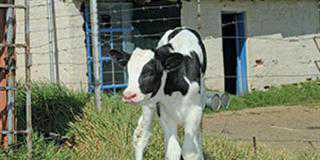Globally, popcorn is considered a high-value crop. Prices can be double or triple those of regular maize. Popcorn is a source of fibre, protein, complex carbohydrates and vitamins, and also has a low fat and sodium content. The USA is the world’s major producer of popcorn grain and seed. In 2007, a total of 400 000t of popcorn grain were produced from 81 300ha. Approximately 80% of the crop is consumed within the USA, while the remainder is exported to more than 90 countries, including Mexico, Turkey and Brazil.
Africa lags behind in popcorn production despite a steady increase in consumption world-wide, but this is set to change, in South Africa at least, says Phumelele Jele, Deputy Manager: Agricultural Scientific Services: KwaZulu-Natal Department of Agriculture and Rural Development. The University of KwaZulu-Natal, supported by the province’s department of agriculture, is conducting extensive research into hybrids that can be produced under dryland conditions.

Phumelele Jele
In this country, popcorn production is estimated at 55 000t/ year on 10 000ha of land, with major production areas being in the Free State and Northern Cape. About 40% of total production is exported to Botswana, Swaziland and Ghana. The cost of production under irrigation is estimated at between R12 000/ha and R15 000/ ha, with an expected yield of about 6t/ha.
Currently, 95% of the seed planted locally is imported – mainly from the USA – and these varieties tend to fail on the land due to lack of adaptability.
They are not suited to high temperatures, prolonged drought or diseases and pests such as rust, maize streak virus and northern corn leaf blight (NCLB). Caused by the Exserohirum turcicum fungus, NCLB can lead to crop losses of up to 68%, especially in humid areas.
Popping gene
Popcorn differs from normal maize by having the popping gene. This causes popcorn to explode into a flake when subjected to temperatures of between 170°C and 180°C. Most commercial hybrids expand 23 to 44 times their original volume during popping. Superior popcorn varieties should combine good yield and high popping ability. For this reason, popcorn breeding generally progresses at a very slow pace.
All too often, if a breeder succeeds in improving yield, then popping ability is likely to be compromised. In addition, popcorn has a narrow genetic base, which means fewer genetic materials for use in breeding programmes. The KZN study has identified at least five locally bred experimental hybrids (out of a total of119) with high yield potential and high popping ability under dryland conditions.
Progress
The breeding programme, supervised by Prof John Derera, started in late 2008 and experimental hybrids were produced in 2012. Since there was no suitable breeding material adapted to sub-Saharan Africa, the process involved breeding many generations through self-pollination before crossing the inbred lines to create the hybrids. The experiments were conducted at Makhathini Research station in Jozini, northern KZN, at the Cedara Research Station and at Ukulinga Research Farm. The two latter sites are near Pietermaritzburg, but their climatic conditions vary significantly.
The hybrids will be commercially available only after they have been evaluated in multiple sites to assess their performance in various locations. This evaluation will be carried out over the next two years. Kenya and Uganda have already shown interest in the hybrids as the climates of these countrries are similar to those at the South African research sites.
Email Phumelele Jele at [email protected].












